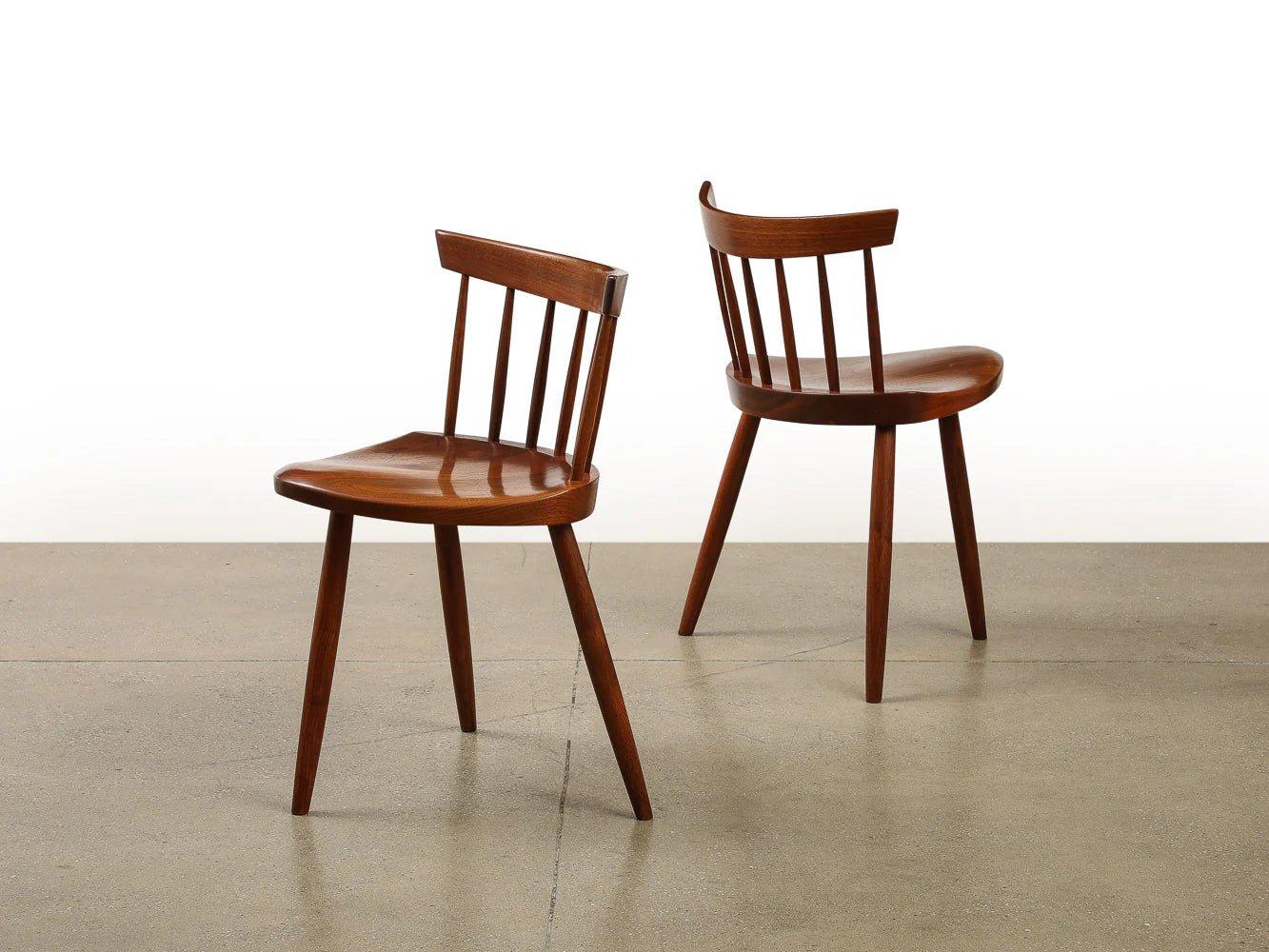GULMOHAR WOOD WORKS - Made In Bangalore
MIRA Chair by George Nakashima
MIRA Chair by George Nakashima
Couldn't load pickup availability
The Mira chair embodies Nakashima’s belief that furniture should be lived with, carrying the wears of everyday interaction. The design is based on a model he made in the late 1940s as an elevated seat so his baby daughter, Mira, could sit at the table on the Mira Chair.
Later, he transformed the Mira chair into a convenient dining chair. Japanese American architect and father of the American craft movement, George Nakashima, is among the first generation of studio furniture makers and is cited as highly influential in the field of contemporary woodworking. He mainly worked with wood waste and offcuts.
Nakashima created asymmetrical forms with fluid contours preserving all the imperfections of the tree he used and turning the defects into stylistic peculiarities. His inspirations for Mira Chair include the Japanese tea ceremony, American Shaker furniture, and the Zen Buddhist beauty ideals.
In the workshop of George Nakashima, the soul of the tree was celebrated. "It is an art- and soul-satisfying adventure to walk the forests of the world, to commune with trees,” Nakashima said, “to bring this living material to the work bench, ultimately to give it a second life." Nakashima, an architect who trained at the Massachusetts Institute of Technology, discovered woodworking while in an internment camp during WWII.
In 1943, he moved to New Hope, Pennsylvania and opened his studio. There he created pieces highlighting wood’s natural beauty, most notably by including the tree’s rough outer layer, or the “free edge”. Nakashima worked throughout the world; in India, he became deeply spiritual. He developed a goal to construct peace altars on every continent—the first, made of book-matched slabs of black walnut, was installed at New York’s Cathedral of St. John the Divine in 1986.
Literature:
M. Nakashima, Nature, Form, & Spirit: The Life and Legacy of George Nakashima, New York 2003, pp. 55, 81-82, 94.
G. Nakashima, The Soul of a Tree, A Woodworker’s Reflections, Tokyo 1981, p. 143.
Share























